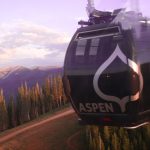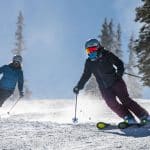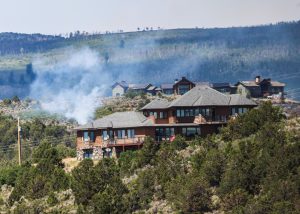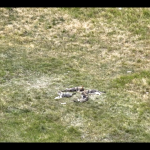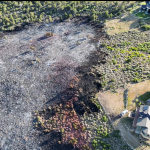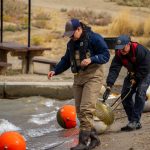Mountain planning expert makes case for Brush Creek-Aspen aerial ropeway

Austin Colbert/The Aspen Times
An aerial ropeway connecting Brush Creek Park & Ride to Aspen could potentially remove 1,700 cars from Colorado Highway 82.
That’s according to Kent Sharp, president of mountain-planning company SE Group, who presented the benefits of an aerial approach as commuting infrastructure in and out of Aspen to the Transportation Coalition for the 21st Century on Thursday.
Sharp provided metrics of Aspen Mountain’s Silver Queen Gondola to show the traffic impact of a new ropeway. Silver Queen moves about 2,000 people per hour in one direction, which translates to about 33 people per minute — almost as many people as a 40-person standard bus.
“Picture a bus coming by the bus stop and leaving full every 60 seconds,” he said.
As the gondola would operate in both directions, that could move about 66 people per minute, or 4,000 people per hour, he added.
Although aerial ropeways — which include tramways, gondolas, chairlifts, and more — have gained popularity in South America and other areas of the world, he said the United States has been slow on the uptake.
“It is critical transportation infrastructure,” he said. “There is no doubt about it.”
He added that aerial ropeways’ benefits include high capacity, quick ride times, and energy efficiency. He said they would greatly reduce greenhouse gas emissions compared to diesel buses.
“These systems don’t actually take that much power,” Sharp said.
But the Brush Creek to Aspen corridor poses some major barriers.
In the United States, aerial ropeways can’t be built over structures, including houses and condos. They must be built either over open space or roads.
“You can follow the road corridors as long as you’ve got the clearance,” he said. “Putting it through open space or putting it through existing corridors is going to be the easiest.”
He estimated that an aerial ropeway between Brush Creek and Aspen would span about 20,000 feet. Given that most aerial ropeways travel at about 1,000 feet per minute, that would leave commuters with a 20-minute ride. He said SE Group would still need to conduct a study to determine if people would take the 20-minute ride rather than drive.
But from a usage standpoint, Sharp pointed out the success of the Telluride Village Gondola, which connects Telluride to Mountain Village, carrying passengers through the mountains rather than leaving them to take the seven-mile road alternative.
The 1.9 mile, 12-minute Telluride gondola is the second most used public transit system in the United States, behind only the Denver light rail system, he said. Despite the fact the gondola moves only 1,000 people per hour — half of the carrying capacity of Aspen’s Silver Queen Gondola — on peak days, it can still transport 20,000 people.
He said an aerial ropeway costs about $2 million to install for every station constructed, and that a station is generally installed every 1,200 feet along a ropeway corridor.
The SE group recently gave a $47 million quote (adjusted to reflect 2025 prices) to the town of Breckenridge when they contemplated installing an 8,000-foot long gondola. The town has not yet approved the project.
In the Thursday discussion, Aspen Mayor Rachael Richards questioned if parking would be an issue around an aerial ropeway, should thousands of people decide to take a skyward approach to transit.
“I think for people with children and groceries, (the) elderly, or (people who) have issues, how far (would they) have to walk to now get on the mode of transport?” she asked.
Sharp said he expects parking would be dispersed throughout the ropeway line, as not all commuters are traveling solely from Brush Creek Park & Ride to Aspen but might start and stop in between.
Nevertheless, he said an aerial ropeway could solve many of Aspen’s transit problems.
“It solves a lot of (problems),” he said. “Real quick.”
This discussion joins the ongoing entrance to Aspen debate and potential alternatives.
Skyler Stark-Ragsdale can be reached at 970-429-9152 or email him at sstark-ragsdale@aspentimes.com.
Pitkin County enters Stage 2 Fire Restrictions amid ‘extreme’ conditions
Pitkin County announced a Stage 2 fire ban effective Friday, Aug. 8, following persistent dry conditions, high winds, and low fuel moisture content.
Wildfire in Missouri Heights prompts evacuations, burns 115 acres as of Sunday night
A wildfire broke out Sunday near Missouri Heights that prompted temporary evacuations and burned an estimated 115 acres, although no injuries or major structural damage were reported.



